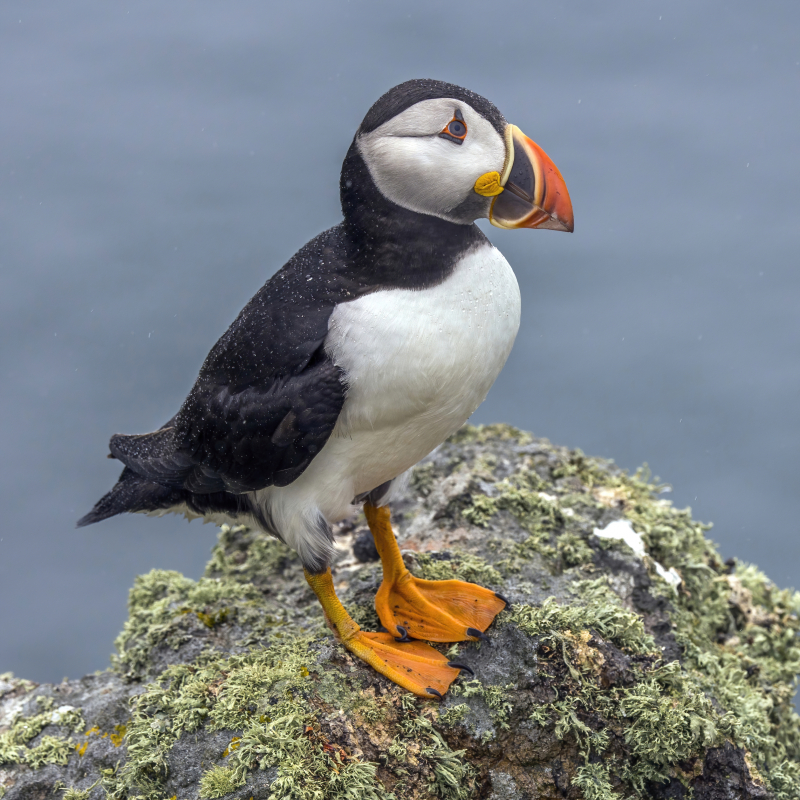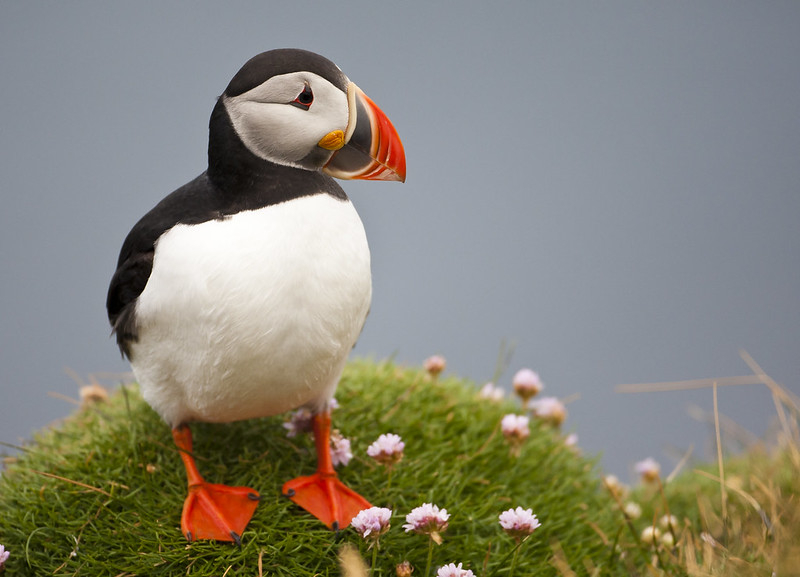Atlantic Puffin
The common puffin, or Atlantic puffin (Fratercula arctica), is a species of seabird in the auk family. The Atlantic Ocean is home to just one native puffin species. Despite having a sizable population and a huge geographic range, the species has experienced a rapid reduction, at least in some areas of its range, and the IUCN has designated it as vulnerable. It stands straight like an auk should when on land. It feeds on small fish and crabs while at sea by swimming on the surface and diving underwater while using its wings as propulsion.
This puffin has a white body and underparts, a black body and back, and pale grey cheek patches. Contrasting with its plumage is its large, sharply marked red-and-black beak and orange legs. When it molts in the winter when at sea, some of the highly colored face features are gone. In the spring, the color returns. The adult male and female share the same outward features, however, the male is typically slightly larger. Although the juvenile's cheek patches are dark grey, it has comparable plumage. The juvenile lacks brilliantly colored head decorations, has a thinner, dark-grey bill with a yellowish-brown tip, and dark-colored legs and feet.
In the Atlantic, puffins have outstanding diving skills. They are capable of diving down to depths of up to 60 meters. The most typical prey items are sand eels, capelins, and hakes. Additionally, Atlantic puffins are skilled flyers. They can fly at a speed of 55 mph while flapping their wings up to 400 times per minute.












